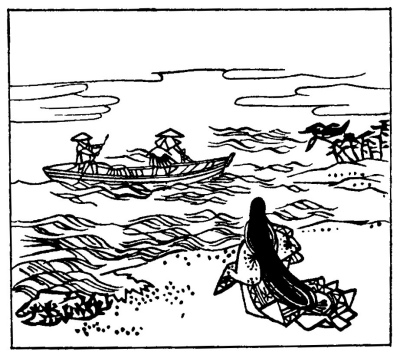
Sacred Texts Japan
Buy this Book on Kindle


|
A Hundred Verses from Old Japan(The Hyakunin-isshu)translated by William N. Porter[1909] |
This is a collection of 100 specimens of Japanese Tanka poetry collected in the 13th Century C.E., with some of the poems dating back to the 7th Centry. Tanka is a 31 syllable format in the pattern 5-7-5-7-7. Most of these poems were written about the time of the Norman Conquest and display a sophistication that western literature would not achieve for a long time thereafter. These little gems are on themes such as nature, the round of the seasons, the impermanence of life, and the vicissitudes of love. There are obvious Buddhist and Shinto influences throughout. Porter's notes put the poems into a cultural and historical context. Each poem is illustrated in this edition with an 18th century Japanese woodcut by an anonymous illustrator.
Production Notes: The original book has Japanese and English on facing pages, each of which are numbered according to the poem. This means that there are two duplicate page numbers per poem. The preface and index have no page numbers. In this text I have put the Japanese, English and the notes on one virtual page per poem, and supplied page numbers for the apparatus.
--John Bruno Hare, 9/19/2004